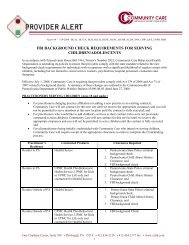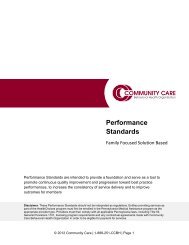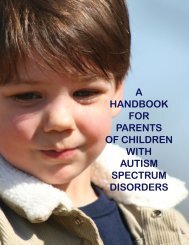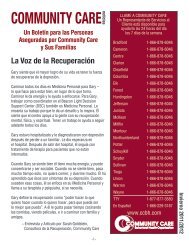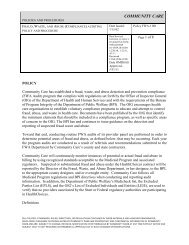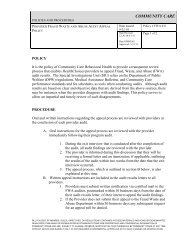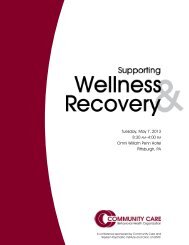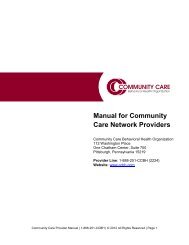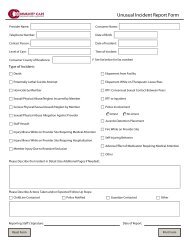a handbook for parents of children with autism spectrum disorders
a handbook for parents of children with autism spectrum disorders
a handbook for parents of children with autism spectrum disorders
- No tags were found...
Create successful ePaper yourself
Turn your PDF publications into a flip-book with our unique Google optimized e-Paper software.
APPENDIX D:GLOSSARYAutistic Spectrum Disorders: Term that encompasses Autism and similar<strong>disorders</strong>. More specifically, the following five <strong>disorders</strong> listed in the DSM-IV: AutisticDisorder, Asperger’s Disorder, PDD-NOS, Childhood Disintegrative Disorder, andRett’s Disorder.BHRS/Behavioral Health Rehabilitation Services: Community-based mentalhealth treatment available to <strong>children</strong> <strong>with</strong> mental health needs in Pennsylvania.BSC: Behavior Specialist Consultant, refers to an advanced degree behavioralspecialist providing services through BHRS.DSM-IV-TR: The <strong>of</strong>ficial system <strong>for</strong> classification <strong>of</strong> psychological and psychiatric<strong>disorders</strong> prepared by and published by the American Psychiatric Association.You play anextremelyimportant rolein helpingyour childto develop.Like other<strong>children</strong>, kids<strong>with</strong> Autismlearn primarilythrough play.So, it’simportantto join yourchild in playthat you bothenjoy.Discrete Trial Training: A short, instructional training which has three distinct parts,(e.g., a direction, behavior, and consequence). Many discrete trial programs relyheavily on directions or commands as the signal to begin the discrete trial.Early Intervention (EI): A state-funded program that is designed to identify and treatdevelopmental problems or other disabilities as early as possible.Evaluation Report (ER): The comprehensive evaluation completed by 3-5 servicesthrough the Intermediate Unit (IU) and <strong>for</strong>warded to the school district upon the start<strong>of</strong> school to <strong>for</strong>mulate the IEP. This may include an IQ test and/or an assessment <strong>of</strong>your child’s current abilities to determine whether he or she is meeting appropriatedevelopmental milestones.IEP/Individualized Educational Plan: A plan that identifies the student’s specificlearning expectations and outlines how the school will address these expectationsthrough appropriate special education programs and services. It also identifies themethods by which the student’s progress will be reviewed. For students 14 years orolder, it must also contain a plan <strong>for</strong> the transition to postsecondary education or theworkplace, and help the student live as independently as possible in the community.- Page 33 -



